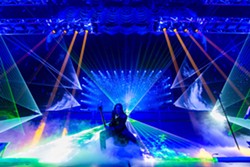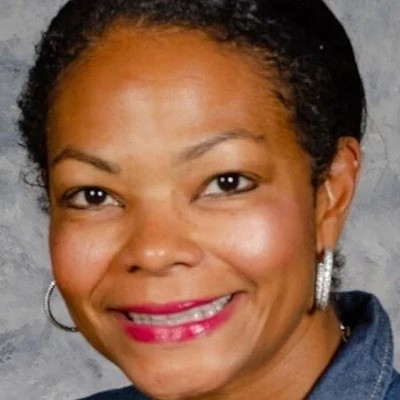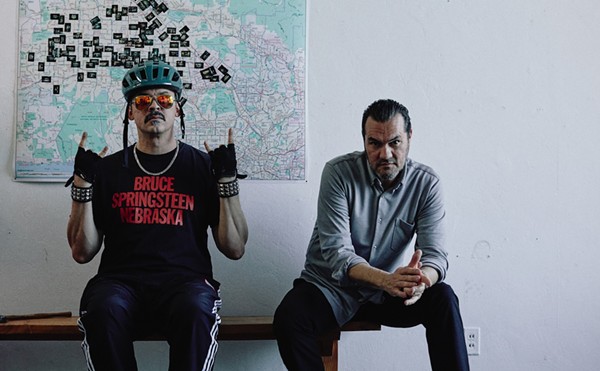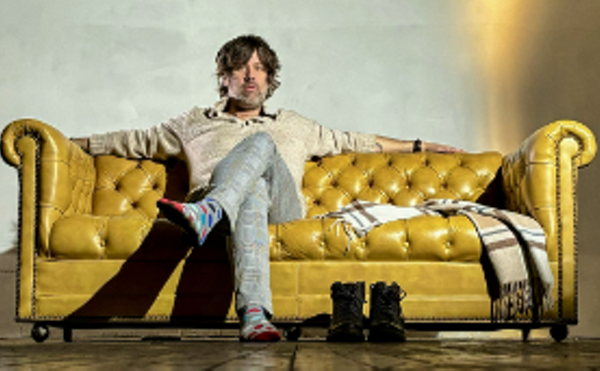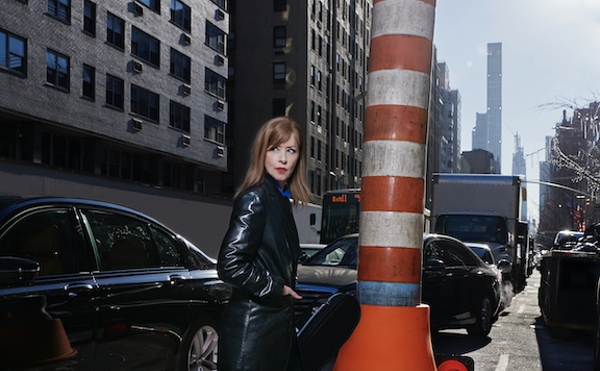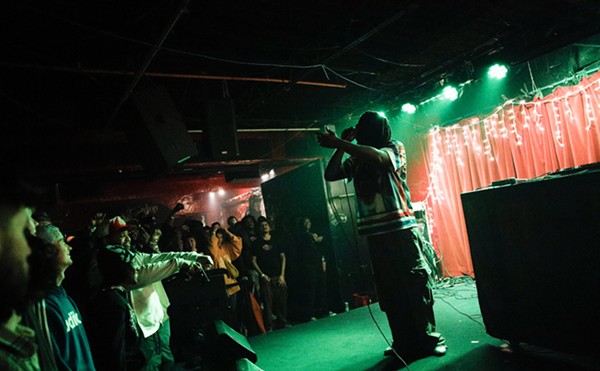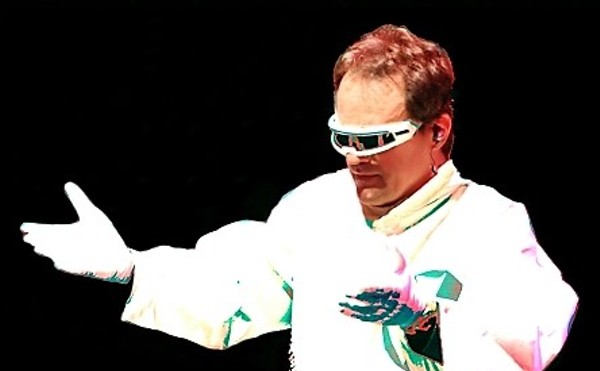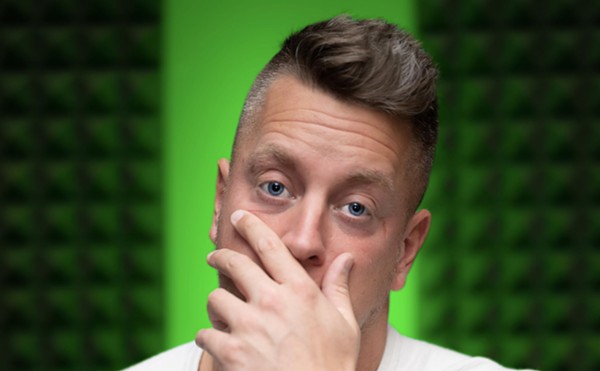A Behind-the-Scenes Look at Trans-Siberian Orchestra's Latest Over-the-Top Tour
Concert Preview
By Jeff Niesel on Wed, Nov 18, 2015 at 10:34 am
[
{
"name": "Ad - NativeInline - Injected",
"component": "38482495",
"insertPoint": "3",
"requiredCountToDisplay": "5"
},{
"name": "Real 1 Player (r2) - Inline",
"component": "38482494",
"insertPoint": "2/3",
"requiredCountToDisplay": "9"
}
]
“We have stuff everywhere,” says Adam Lind, the self-proclaimed “guy who’s responsible for everything that goes wrong.” Lind heads up Night Castle Management, the firm that handles all of Trans-Siberian Orchestra’s “artistic endeavors.” He makes the remark as he walks through the cluttered hallways of Mid-America Center in Council Bluffs, Iowa, a small town just across a bridge from Omaha where the prog rock band rehearses each year in preparation for its annual winter tour. To say TSO has taken over the venue would be an understatement. You can see a slideshow from rehearsals here.
At the arena’s entrance there’s a table full of old, brightly colored crew T-shirts from nearly two decades of touring. They’re spread out on a table, free for the taking. One bright orange T-shirt displays the logo for 2012’s “Beethoven’s Last Night” tour — a drawing of Beethoven with disheveled hair — and a purple shirt features an image of a fire-breathing dragon and an electric guitar. A plastic gargoyle stands watch in a hallway as members of the crew whirr by on Segways and electric scooters.
You can hear wailing guitars and operatic vocals emanating from behind the closed arena doors as the band practices tunes such as “What Child is This?” and “Music Box Blues.” Inside those doors, roadies walk the empty arena floor while carrying open laptops. A giant pyramid-like contraption sits under a black tarp as if it’s a modern-day Batmobile, ready to shock and awe once the tarp comes off.
On the back loading dock, forklifts bring in the heavy equipment, and somewhere in the arena’s bowels, a crew works at cutting sheet metal and drilling the gigantic metallic structures that hold the array of lights and pyrotechnical gear together. A rehearsal stage for the East Coast version of the tour sits on one side of the arena floor while a stage for the West Coast version of the tour has been erected on the other end of the arena floor. The reason for the two stages is simple: TSO’s concerts have become so gigantic that they require two incarnations. The East Coast tour kicks off with two performances today in Erie, Pennsylvania, and the West Coast tour starts today with a Council Bluffs show. The tour rolls into Cleveland on Dec. 30.
“The rehearsal process is the hardest part of the whole tour,” admits raspy-voiced backing singer Kayla Reeves, who joined the group six years ago when she was only 17 years old. “Once we’re on the road, it’s like Groundhog Day [because band members wake up day after day to the same reality], and everything is second nature. Picture an iceberg. The top of it is just barely sticking out. Underneath it you have this huge chunk of ice. That’s like rehearsal. The show is the little top above the water. Every year, [show creator] Paul [O’Neill] keeps putting more and more chips on the table. I remember how overwhelmed I was the first year I came into the arena and saw the two stages. I’ve never seen anything like it. Every year, I’m just blown away. Paul never ceases to turn it up a notch.”
For the past seven years, the group has rehearsed in this small, centrally located town that puts the East and West Coast versions of the tour in prime launching position. A fleet of trucks and tour buses are already positioned in the arena’s parking lot. Soon, they’ll roll out and haul crew and gear across the country for the next eight weeks to bring the biggest, baddest, most over-the-top and extravagant Christmas rock show you’ll ever see to an arena near you.
Paul O’Neill: A Man of Letters
When he was young, O’Neill, the group’s mastermind, had trouble reading anything more sophisticated than Cat in the Hat. In the first grade, he was in danger of falling behind. But then his mother spent a summer teaching him phonetics, and the floodgates opened as O’Neill, whose parents forbid him to watch TV, started devouring the books around the family’s home. Now, he easily recites facts from European history and quotes Cicero.
As he was learning to play guitar, he went to see the Who perform at Madison Square Garden in the late ’60s, something he describes as a pivotal moment.
“The Who were the only band that I walked out on because they were so good I couldn’t stand watching them,” says O’Neill, who, with his black leather jacket, dark Italian sunglasses, speckled gray beard and shoulder length hair, looks like a cross between a member of the Ramones and a Lord of the Rings wizard. His dressing room includes a keyboard, two guitars and a KISS-themed pinball machine. For guests, the room also contains a few cases of Trans-Siberian swag — a stack of denim jackets with the TSO emblem on the back and CDs of the band’s new album, Letters from the Labyrinth. He gives the stuff away at such a rapid pace, the cases have to regularly be replenished.
“[The Who] were so good, I was about to throw up,” he continues. “I walked around New York City really depressed for about two hours. To me, the Who were the ones who invented the rock opera. When I first heard ‘Pinball Wizard’ on the radio, I thought, ‘Whoa!’ When I heard it on the album Tommy, it was a whole different thing.”
Later, as he toured with Aerosmith in the ’70s, he started collecting letters and developing his esoteric sense of the world. He has every letter from Thomas Edison. He bought the letters through the auction house Christies and at various estate sales.
“I have every letter from Thomas Edison to his tool and die guy about how to build the first record player — I have every single one,” he says. “I have a lot of letters from Lincoln, from Churchill, from Oscar Wilde, because when you’re holding letters that Lincoln held, that Churchill held, that Robert Lewis Stevenson wrote when he was a teenager, you feel a connection. Like I tell my daughter, we don’t own these, we’re just the caretakers of them for the next generation.
I have one letter from George Washington to Thomas Jefferson, from December 1779. He thought he was going to lose
the war. It’s fascinating stuff.”
Those literary sensibilities would inform the prog band Savatage, which originally recorded “Christmas Eve Sarajevo 12/24” in 1995. The song would reappear on TSO’s debut, 1996’s Christmas Eve and Other Stories, and launch the band into the behemoth that it is today.
Al Pitrelli, the current West Coast musical director, describes the informal nature of that album’s initial songwriting sessions.
“Me, Paul O’Neill, Jon Oliva and Bob Kinkel got together at what we called the kitchen table in Paul’s apartment,” says the slender, long-haired Pitrelli from his dressing room where he’s plastered a sticker that reads “roadie for life” on a black case full of clothes and gear. “We would throw ideas in the middle of the table, literally and figuratively. We were just having fun. We didn’t think it would ever sell. Who the hell would buy a Christmas record by a bunch of long hairs from Queens? Don’t ever tell the bumblebee it can’t fly. It was really that simple.”
The Cleveland Connection
The first-ever TSO show took place in 1996 at a New York hospital. New York DJ Scott Shannon, whom O’Neill describes as “the most powerful DJ in America at the time,” invited the band to play Blythedale Children’s Hospital just north of New York City. O’Neill initially didn’t want to play the show; but once he visited the hospital, he couldn’t resist.
“It’s a fabulous hospital that helps critically hurt children,” explains Lind. “Every year, they put on a concert for them. They built a stage and the kids were heartbreaking cases. Some of them even had gunshot wounds. It was really amazing.”
Pitrelli says that show “changed my life forever.” He had walked out of an Irish bar in Astoria, in Queens, at 4 a.m., oblivious to the concert’s significance. But once he arrived at the venue, he realized the show would be something special.
“We were just killing time the night before the show,” he says, adding that he had spent the wee hours of the morning drinking an 18-year-old Scotch. “I thought, ‘Man, it’s early in the morning for this kind of concert.’ I quickly realized it wasn’t a ‘I have a boo-boo’ concert. I realized it was serious stuff, and we would have an impact. I was watching people crying, and I thought it was more special. I just thought we have a song on the radio — that’s awesome. I realized it wasn’t just a rock band anymore.”
Then, in 1998, the band recorded a TV show before it had ever toured. O’Neill has described it as the band’s “first show.”
“Paul didn’t want to do the typical video,” says Lind.” “He turned what would have been shown only once on TV into this story that’s been on TV every year since. In typical Paul fashion, he threw everyone a curveball.”
Filmed in an old Jersey City theater, the show features Ossie Davis, Jewel and Michael Crawford. O’Neill has said the band, though still in the early stages, captured a certain “magic,” as the special features some of the best songs from the band’s catalog at the time.
At the urging of Cleveland disc jockey Bill Louis, the group took its 1996 Christmas rock opera Christmas Eve and Other Stories, the first part of a trilogy of prog rock-influenced Christmas albums, on the road in 1999. Lewis had been playing the album’s single, "Christmas Eve Sarajevo 12/24,” on WNCX and had gotten great feedback from fans.
“He said, ‘You can do a show in New York, but not in Cleveland?’ So he nagged me to death,” O’Neill says of Lewis. “Turns out, he was right. The first show sold out in four hours.”
The group then added another Cleveland show and that sold out. A third was added. It also sold out.
“Cleveland was pandemonium,” Pitrelli says.
Cleveland-based Belkin Productions also booked gigs in Detroit, New York, Philadelphia and Chicago. With the exception of Chicago, each show exceeded expectations. The following year, the band hired Elliot Saltzman to be its tour director as it expanded to about 30 shows with two different installations traipsing across the country.
“Adam Lind suckered me into it,” says Saltzman while sitting on the swanky leather sofa in his dimly lit office, the walls of which are festooned with Indian tapestries to give off the proper “vibe.” “He said it would be really easy. Once I said yes, he then added that he wanted to have a second tour go out. I had to scramble to hire other people. That year, it was really crazy.”
Saltzman also hired lighting designer Bryan Hartley, to help the band come up with a product that Saltzman says is better than everything else on the road. Hartley had known O’Neill for years and was happy to come on the tour. He still does all the band’s lighting.
That incarnation of the tour had a good 13-year run before O'Neill decided to mix things up, often playing new albums in their entirety while still incorporating the “hits.” Now, it’s consistently one of the highest grossing tours in the world. When asked about how he deals with the pressure to outdo each previous tour, Pitrelli uses a sports metaphor.
“The New England Patriots won three Super Bowls and they’re not counting their rings,” he says. “[Former St. Louis Cardinals’ manager] Tony LaRussa, who’s a big fan of the band, comes every year. We’d ask him if he was done, he always says no. In sports, you go back to square one at the start of every season. It’s like that with Trans-Siberian Orchestra.”
Lights, Lasers, Pyro!
In its 19-year history, TSO has played more than 1,600 shows for more than 11 million fans, officially making it one of the world’s biggest arena rock acts. For the past several years, the band’s winter tours have consistently ranked in the Top 10 for attendance and grosses; back in 2009, Billboard called it one of the “Top Touring Artists of the Decade.” Last year’s 2014 Winter Tour grossed more than $51 million in 52 days; it played to nearly one million fans.
This year’s Ghosts of Christmas Eve production will hit 60 cities across North America to perform 100 shows. Based on TSO’s multi-platinum DVD and long-running PBS fundraiser, the concert follows the journey of a young runaway who, on Christmas Eve, breaks into an abandoned vaudeville theater seeking shelter from the cold. She then experiences “ghostly visions” from that concert hall’s past. The band will also play past hits such as "Christmas Eve Sarajevo 12/24," "O’ Come All Ye Faithful," "Good King Joy," "Christmas Canon," "Music Box Blues," "Promises to Keep" and "This Christmas Day" during the two-hour concert.
“Some of the vocals and instrumentals from the new album are amazing,” says Pitrelli when asked about the current show. “The film from the original TV special is part of the backdrop, and when you see that, you feel like you’re in the old 19th century theater where we filmed that first special.”
The current show also features a new high-definition video screen that’s about the size of half a football field. The production involves 40 trucks, 20 buses, 240 touring personnel, 276 local stagehands per date, 256 rigging points, 256 one-ton motors, 1,248 intelligent lighting fixtures, 36 full color lasers including audience scanners, 6,352 video panels, 1,552 pyrotechnic effects, 596 flame/fire modules, 112 speaker boxes and four mixing boards (the boards alone cost a total of one million bucks).
As a dress rehearsal of the current show commences, which O’Neill says hearkens back to TSO’s beginnings, O’Neill arrives on stage, black guitar strapped across his chest. He unleashes one meaty riff after another while a tender Christmas tune featuring children singing plays over the house PA. Huge flames shoot from the rear of the stage as a crew of sound guys hovers over mixing boards and computers, adjusting the sound levels and positioning the tresses near the arena’s roof. “Freebird!” yells one roadie, causing O’Neill to break into a smile. And when the crew cranks up the pyro, O’Neill responds favorably. “Fuck, yeah!” he screams.
As the show begins, a cadre of backing singers belt out the operatic “Time and Distance” as the stage’s ginormous video screens project the image of an animated rendition of a castle that looks like it was taken from a video game. It’s the kind of trippy imagery that’s often only seen in today’s EDM concerts. It’s not long before the pyro kicks in, making the stage look like an oversized outdoor fireplace. Soon, crisp blue and white lasers flicker through the arena as the band launches into the power ballad “Lost Christmas Eve.” The video screens flicker with old news reports and white noise as the band sinks its teeth into “Christmas Eve Sarajevo,” TSO’s signature tune that finds the group guitarists standing side-by-side at the front of the stage, guitars hoisted high over their heads for the song’s climactic crescendo.
Sitting back in his dressing room, O’Neill describes TSO as “an ideal and an idea.” He says he wants to continue to “break down the wall” between band and audience and envisions that, at some point, the show will populate two stages on the arena floor connected by a catwalk for what he calls “end-to-end arena rock.” Performers will sing and play in unison so that “no matter where you turn, you’re surrounded by the music.” He’s not sure if that sort of setup will work in venues where the stages can only be situated on one side of the floor, but he comes off as the kind of guy who doesn’t take “no” for an answer. You get the sense that he’ll find a way to make it work.
Saltzman agrees that the game plan remains to keep getting bigger and better.
“TSO is all about walking out of the show and saying, ‘That’s the best show I’ve ever seen,’” he says. “The firepower we have out there is unparalleled. We spend in the millions of dollars for lighting and pyro. For us, it’s full blown. It’s a risk, though not so much now that we have a dedicated fan base. But these are lighting and pyro effects that people have never seen before. You will never see this many lasers in your life. At one point, it looks like the whole stage is morphing and coming off its tracks and moving toward you. It’s an onslaught. It’s visual and sensual experiences you’ve never had before. It’s like putting on a new dress.”
The fact that TSO has become such a huge production means that it has outlived O’Neill’s initial expectations.
“We hoped it would do okay,” he admits. “When the first album came out in 1996, it didn’t sell, but then Aerosmith wasn’t a hit out of the box either. But I wouldn’t ever want to change this, even though it threw off the whole rhythm of our whole lives. Because of how popular the Christmas rock operas are, no matter what we were doing, come October, we have to stop and build these monstrous systems. I want people to experience emotions they’ve never felt before. I realize if I can change a key and make a song one-tenth of one percent better, I will. Simply singing isn’t acceptable in TSO. The singers need to become the characters.”
Saltzman concurs as he watches a dress rehearsal of the 140-minute show come to an end.
“This passes the shiver test,” he says emphatically, pointing at the stage. “If you get the shivers from the singing and then the shivers from watching the production, it’s the double shivers. And if you have that, then you have the audience in the palm of your hand.”
Trans-Siberian Orchestra, 3:30 and 8 p.m., Wednesday, Dec. 30, Quicken Loans Arena, One Center Court, 216-420-2000. Tickets: $34-$74, theqarena.com.
At the arena’s entrance there’s a table full of old, brightly colored crew T-shirts from nearly two decades of touring. They’re spread out on a table, free for the taking. One bright orange T-shirt displays the logo for 2012’s “Beethoven’s Last Night” tour — a drawing of Beethoven with disheveled hair — and a purple shirt features an image of a fire-breathing dragon and an electric guitar. A plastic gargoyle stands watch in a hallway as members of the crew whirr by on Segways and electric scooters.
You can hear wailing guitars and operatic vocals emanating from behind the closed arena doors as the band practices tunes such as “What Child is This?” and “Music Box Blues.” Inside those doors, roadies walk the empty arena floor while carrying open laptops. A giant pyramid-like contraption sits under a black tarp as if it’s a modern-day Batmobile, ready to shock and awe once the tarp comes off.
On the back loading dock, forklifts bring in the heavy equipment, and somewhere in the arena’s bowels, a crew works at cutting sheet metal and drilling the gigantic metallic structures that hold the array of lights and pyrotechnical gear together. A rehearsal stage for the East Coast version of the tour sits on one side of the arena floor while a stage for the West Coast version of the tour has been erected on the other end of the arena floor. The reason for the two stages is simple: TSO’s concerts have become so gigantic that they require two incarnations. The East Coast tour kicks off with two performances today in Erie, Pennsylvania, and the West Coast tour starts today with a Council Bluffs show. The tour rolls into Cleveland on Dec. 30.
“The rehearsal process is the hardest part of the whole tour,” admits raspy-voiced backing singer Kayla Reeves, who joined the group six years ago when she was only 17 years old. “Once we’re on the road, it’s like Groundhog Day [because band members wake up day after day to the same reality], and everything is second nature. Picture an iceberg. The top of it is just barely sticking out. Underneath it you have this huge chunk of ice. That’s like rehearsal. The show is the little top above the water. Every year, [show creator] Paul [O’Neill] keeps putting more and more chips on the table. I remember how overwhelmed I was the first year I came into the arena and saw the two stages. I’ve never seen anything like it. Every year, I’m just blown away. Paul never ceases to turn it up a notch.”
For the past seven years, the group has rehearsed in this small, centrally located town that puts the East and West Coast versions of the tour in prime launching position. A fleet of trucks and tour buses are already positioned in the arena’s parking lot. Soon, they’ll roll out and haul crew and gear across the country for the next eight weeks to bring the biggest, baddest, most over-the-top and extravagant Christmas rock show you’ll ever see to an arena near you.
Paul O’Neill: A Man of Letters
When he was young, O’Neill, the group’s mastermind, had trouble reading anything more sophisticated than Cat in the Hat. In the first grade, he was in danger of falling behind. But then his mother spent a summer teaching him phonetics, and the floodgates opened as O’Neill, whose parents forbid him to watch TV, started devouring the books around the family’s home. Now, he easily recites facts from European history and quotes Cicero.
As he was learning to play guitar, he went to see the Who perform at Madison Square Garden in the late ’60s, something he describes as a pivotal moment.
“The Who were the only band that I walked out on because they were so good I couldn’t stand watching them,” says O’Neill, who, with his black leather jacket, dark Italian sunglasses, speckled gray beard and shoulder length hair, looks like a cross between a member of the Ramones and a Lord of the Rings wizard. His dressing room includes a keyboard, two guitars and a KISS-themed pinball machine. For guests, the room also contains a few cases of Trans-Siberian swag — a stack of denim jackets with the TSO emblem on the back and CDs of the band’s new album, Letters from the Labyrinth. He gives the stuff away at such a rapid pace, the cases have to regularly be replenished.
“[The Who] were so good, I was about to throw up,” he continues. “I walked around New York City really depressed for about two hours. To me, the Who were the ones who invented the rock opera. When I first heard ‘Pinball Wizard’ on the radio, I thought, ‘Whoa!’ When I heard it on the album Tommy, it was a whole different thing.”
Later, as he toured with Aerosmith in the ’70s, he started collecting letters and developing his esoteric sense of the world. He has every letter from Thomas Edison. He bought the letters through the auction house Christies and at various estate sales.
“I have every letter from Thomas Edison to his tool and die guy about how to build the first record player — I have every single one,” he says. “I have a lot of letters from Lincoln, from Churchill, from Oscar Wilde, because when you’re holding letters that Lincoln held, that Churchill held, that Robert Lewis Stevenson wrote when he was a teenager, you feel a connection. Like I tell my daughter, we don’t own these, we’re just the caretakers of them for the next generation.
I have one letter from George Washington to Thomas Jefferson, from December 1779. He thought he was going to lose
the war. It’s fascinating stuff.”
Those literary sensibilities would inform the prog band Savatage, which originally recorded “Christmas Eve Sarajevo 12/24” in 1995. The song would reappear on TSO’s debut, 1996’s Christmas Eve and Other Stories, and launch the band into the behemoth that it is today.
Al Pitrelli, the current West Coast musical director, describes the informal nature of that album’s initial songwriting sessions.
“Me, Paul O’Neill, Jon Oliva and Bob Kinkel got together at what we called the kitchen table in Paul’s apartment,” says the slender, long-haired Pitrelli from his dressing room where he’s plastered a sticker that reads “roadie for life” on a black case full of clothes and gear. “We would throw ideas in the middle of the table, literally and figuratively. We were just having fun. We didn’t think it would ever sell. Who the hell would buy a Christmas record by a bunch of long hairs from Queens? Don’t ever tell the bumblebee it can’t fly. It was really that simple.”
The Cleveland Connection
The first-ever TSO show took place in 1996 at a New York hospital. New York DJ Scott Shannon, whom O’Neill describes as “the most powerful DJ in America at the time,” invited the band to play Blythedale Children’s Hospital just north of New York City. O’Neill initially didn’t want to play the show; but once he visited the hospital, he couldn’t resist.
“It’s a fabulous hospital that helps critically hurt children,” explains Lind. “Every year, they put on a concert for them. They built a stage and the kids were heartbreaking cases. Some of them even had gunshot wounds. It was really amazing.”
Pitrelli says that show “changed my life forever.” He had walked out of an Irish bar in Astoria, in Queens, at 4 a.m., oblivious to the concert’s significance. But once he arrived at the venue, he realized the show would be something special.
“We were just killing time the night before the show,” he says, adding that he had spent the wee hours of the morning drinking an 18-year-old Scotch. “I thought, ‘Man, it’s early in the morning for this kind of concert.’ I quickly realized it wasn’t a ‘I have a boo-boo’ concert. I realized it was serious stuff, and we would have an impact. I was watching people crying, and I thought it was more special. I just thought we have a song on the radio — that’s awesome. I realized it wasn’t just a rock band anymore.”
Then, in 1998, the band recorded a TV show before it had ever toured. O’Neill has described it as the band’s “first show.”
“Paul didn’t want to do the typical video,” says Lind.” “He turned what would have been shown only once on TV into this story that’s been on TV every year since. In typical Paul fashion, he threw everyone a curveball.”
Filmed in an old Jersey City theater, the show features Ossie Davis, Jewel and Michael Crawford. O’Neill has said the band, though still in the early stages, captured a certain “magic,” as the special features some of the best songs from the band’s catalog at the time.
At the urging of Cleveland disc jockey Bill Louis, the group took its 1996 Christmas rock opera Christmas Eve and Other Stories, the first part of a trilogy of prog rock-influenced Christmas albums, on the road in 1999. Lewis had been playing the album’s single, "Christmas Eve Sarajevo 12/24,” on WNCX and had gotten great feedback from fans.
“He said, ‘You can do a show in New York, but not in Cleveland?’ So he nagged me to death,” O’Neill says of Lewis. “Turns out, he was right. The first show sold out in four hours.”
The group then added another Cleveland show and that sold out. A third was added. It also sold out.
“Cleveland was pandemonium,” Pitrelli says.
Cleveland-based Belkin Productions also booked gigs in Detroit, New York, Philadelphia and Chicago. With the exception of Chicago, each show exceeded expectations. The following year, the band hired Elliot Saltzman to be its tour director as it expanded to about 30 shows with two different installations traipsing across the country.
“Adam Lind suckered me into it,” says Saltzman while sitting on the swanky leather sofa in his dimly lit office, the walls of which are festooned with Indian tapestries to give off the proper “vibe.” “He said it would be really easy. Once I said yes, he then added that he wanted to have a second tour go out. I had to scramble to hire other people. That year, it was really crazy.”
Saltzman also hired lighting designer Bryan Hartley, to help the band come up with a product that Saltzman says is better than everything else on the road. Hartley had known O’Neill for years and was happy to come on the tour. He still does all the band’s lighting.
That incarnation of the tour had a good 13-year run before O'Neill decided to mix things up, often playing new albums in their entirety while still incorporating the “hits.” Now, it’s consistently one of the highest grossing tours in the world. When asked about how he deals with the pressure to outdo each previous tour, Pitrelli uses a sports metaphor.
“The New England Patriots won three Super Bowls and they’re not counting their rings,” he says. “[Former St. Louis Cardinals’ manager] Tony LaRussa, who’s a big fan of the band, comes every year. We’d ask him if he was done, he always says no. In sports, you go back to square one at the start of every season. It’s like that with Trans-Siberian Orchestra.”
Lights, Lasers, Pyro!
In its 19-year history, TSO has played more than 1,600 shows for more than 11 million fans, officially making it one of the world’s biggest arena rock acts. For the past several years, the band’s winter tours have consistently ranked in the Top 10 for attendance and grosses; back in 2009, Billboard called it one of the “Top Touring Artists of the Decade.” Last year’s 2014 Winter Tour grossed more than $51 million in 52 days; it played to nearly one million fans.
This year’s Ghosts of Christmas Eve production will hit 60 cities across North America to perform 100 shows. Based on TSO’s multi-platinum DVD and long-running PBS fundraiser, the concert follows the journey of a young runaway who, on Christmas Eve, breaks into an abandoned vaudeville theater seeking shelter from the cold. She then experiences “ghostly visions” from that concert hall’s past. The band will also play past hits such as "Christmas Eve Sarajevo 12/24," "O’ Come All Ye Faithful," "Good King Joy," "Christmas Canon," "Music Box Blues," "Promises to Keep" and "This Christmas Day" during the two-hour concert.
“Some of the vocals and instrumentals from the new album are amazing,” says Pitrelli when asked about the current show. “The film from the original TV special is part of the backdrop, and when you see that, you feel like you’re in the old 19th century theater where we filmed that first special.”
The current show also features a new high-definition video screen that’s about the size of half a football field. The production involves 40 trucks, 20 buses, 240 touring personnel, 276 local stagehands per date, 256 rigging points, 256 one-ton motors, 1,248 intelligent lighting fixtures, 36 full color lasers including audience scanners, 6,352 video panels, 1,552 pyrotechnic effects, 596 flame/fire modules, 112 speaker boxes and four mixing boards (the boards alone cost a total of one million bucks).
As a dress rehearsal of the current show commences, which O’Neill says hearkens back to TSO’s beginnings, O’Neill arrives on stage, black guitar strapped across his chest. He unleashes one meaty riff after another while a tender Christmas tune featuring children singing plays over the house PA. Huge flames shoot from the rear of the stage as a crew of sound guys hovers over mixing boards and computers, adjusting the sound levels and positioning the tresses near the arena’s roof. “Freebird!” yells one roadie, causing O’Neill to break into a smile. And when the crew cranks up the pyro, O’Neill responds favorably. “Fuck, yeah!” he screams.
As the show begins, a cadre of backing singers belt out the operatic “Time and Distance” as the stage’s ginormous video screens project the image of an animated rendition of a castle that looks like it was taken from a video game. It’s the kind of trippy imagery that’s often only seen in today’s EDM concerts. It’s not long before the pyro kicks in, making the stage look like an oversized outdoor fireplace. Soon, crisp blue and white lasers flicker through the arena as the band launches into the power ballad “Lost Christmas Eve.” The video screens flicker with old news reports and white noise as the band sinks its teeth into “Christmas Eve Sarajevo,” TSO’s signature tune that finds the group guitarists standing side-by-side at the front of the stage, guitars hoisted high over their heads for the song’s climactic crescendo.
Sitting back in his dressing room, O’Neill describes TSO as “an ideal and an idea.” He says he wants to continue to “break down the wall” between band and audience and envisions that, at some point, the show will populate two stages on the arena floor connected by a catwalk for what he calls “end-to-end arena rock.” Performers will sing and play in unison so that “no matter where you turn, you’re surrounded by the music.” He’s not sure if that sort of setup will work in venues where the stages can only be situated on one side of the floor, but he comes off as the kind of guy who doesn’t take “no” for an answer. You get the sense that he’ll find a way to make it work.
Saltzman agrees that the game plan remains to keep getting bigger and better.
“TSO is all about walking out of the show and saying, ‘That’s the best show I’ve ever seen,’” he says. “The firepower we have out there is unparalleled. We spend in the millions of dollars for lighting and pyro. For us, it’s full blown. It’s a risk, though not so much now that we have a dedicated fan base. But these are lighting and pyro effects that people have never seen before. You will never see this many lasers in your life. At one point, it looks like the whole stage is morphing and coming off its tracks and moving toward you. It’s an onslaught. It’s visual and sensual experiences you’ve never had before. It’s like putting on a new dress.”
The fact that TSO has become such a huge production means that it has outlived O’Neill’s initial expectations.
“We hoped it would do okay,” he admits. “When the first album came out in 1996, it didn’t sell, but then Aerosmith wasn’t a hit out of the box either. But I wouldn’t ever want to change this, even though it threw off the whole rhythm of our whole lives. Because of how popular the Christmas rock operas are, no matter what we were doing, come October, we have to stop and build these monstrous systems. I want people to experience emotions they’ve never felt before. I realize if I can change a key and make a song one-tenth of one percent better, I will. Simply singing isn’t acceptable in TSO. The singers need to become the characters.”
Saltzman concurs as he watches a dress rehearsal of the 140-minute show come to an end.
“This passes the shiver test,” he says emphatically, pointing at the stage. “If you get the shivers from the singing and then the shivers from watching the production, it’s the double shivers. And if you have that, then you have the audience in the palm of your hand.”
Trans-Siberian Orchestra, 3:30 and 8 p.m., Wednesday, Dec. 30, Quicken Loans Arena, One Center Court, 216-420-2000. Tickets: $34-$74, theqarena.com.
SCENE Supporters make it possible to tell the Cleveland stories you won’t find elsewhere.
Become a supporter today.
About The Author
Jeff Niesel
Jeff has been covering the Cleveland music scene for more than 20 years now. And on a regular basis, he tries to talk to whatever big acts are coming through town, too. If you're in a band that he needs to hear, email him at [email protected].
Scroll to read more Music News articles
Newsletters
Join Cleveland Scene Newsletters
Subscribe now to get the latest news delivered right to your inbox.

